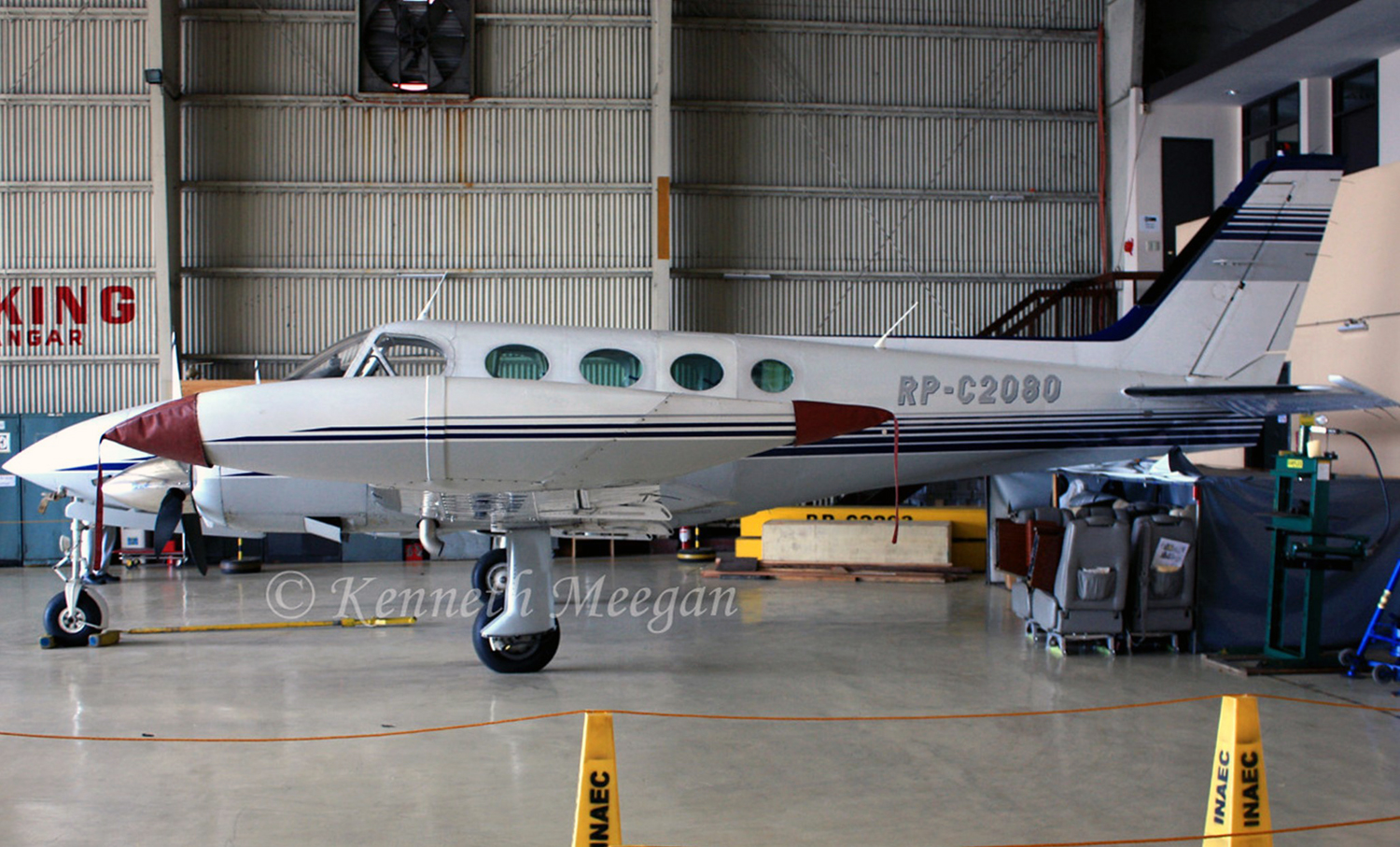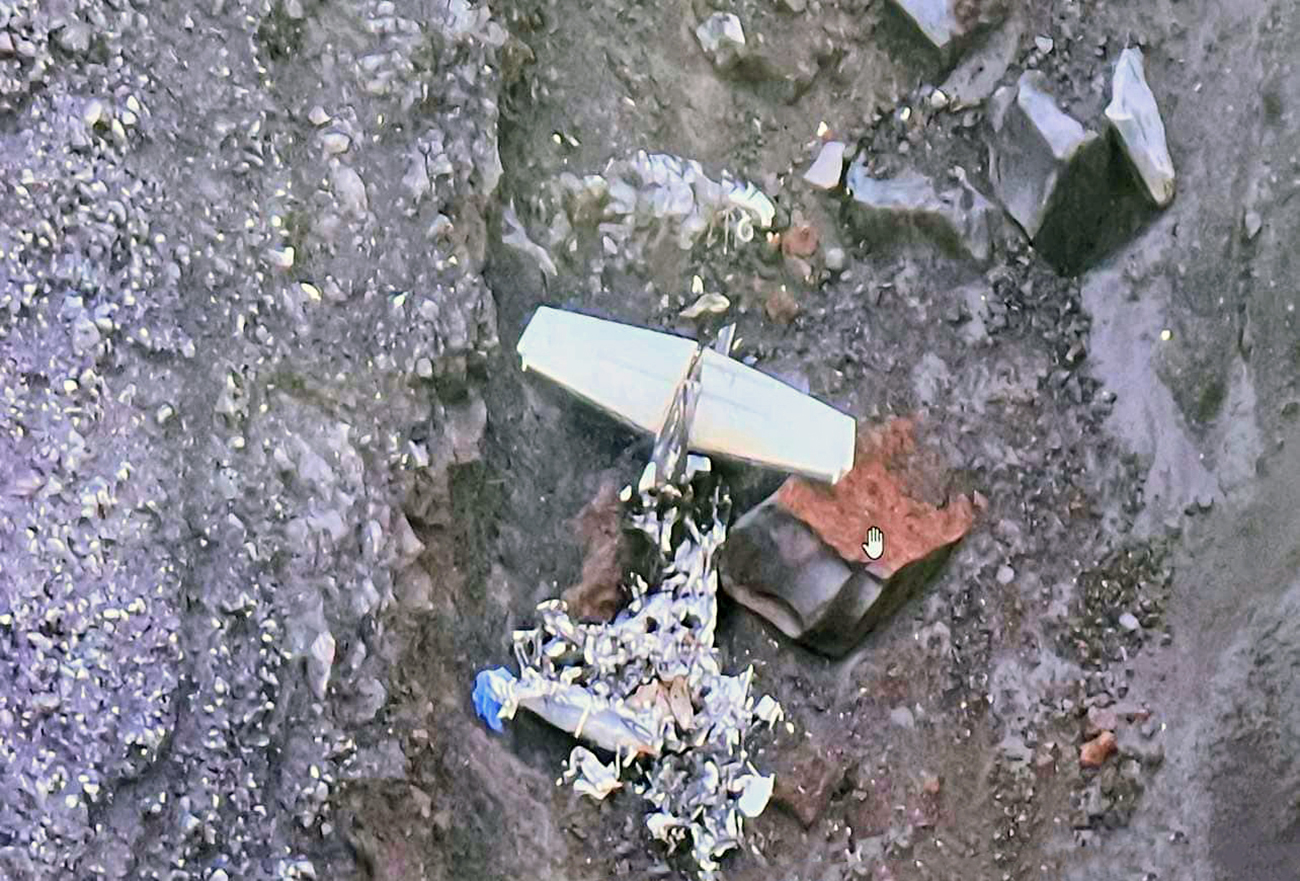Country
Crash of a Cessna 340A in Magny-lès-Villers
Date & Time:
Dec 2, 2024 at 1457 LT
Registration:
N340GJ
Survivors:
Yes
Schedule:
Beaune - Beaune
MSN:
340A-0637
YOM:
1978
Crew on board:
2
Crew fatalities:
Pax on board:
0
Pax fatalities:
Other fatalities:
Total fatalities:
0
Circumstances:
The crew (one pilot and one copilot) were completing a local training flight out from Beaune-Challenges Airport. In unknown circumstances, the airplane crash landed in a vineyard located in Magny-lès-Villers, about 10 km north of the airfield, bursting into flames. Both occupants evacuated the cabin and were seriously injured. The airplane was destroyed by fire.
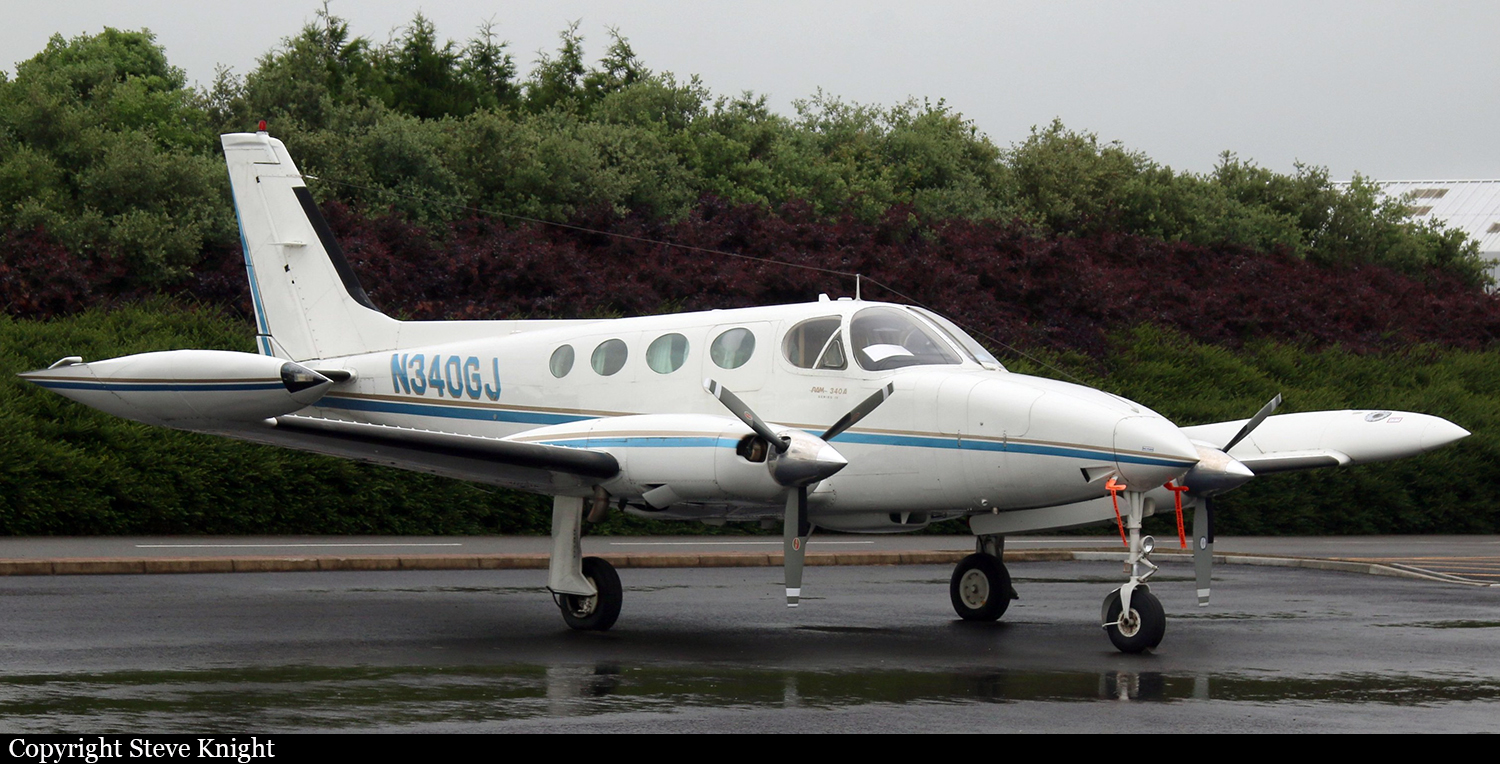

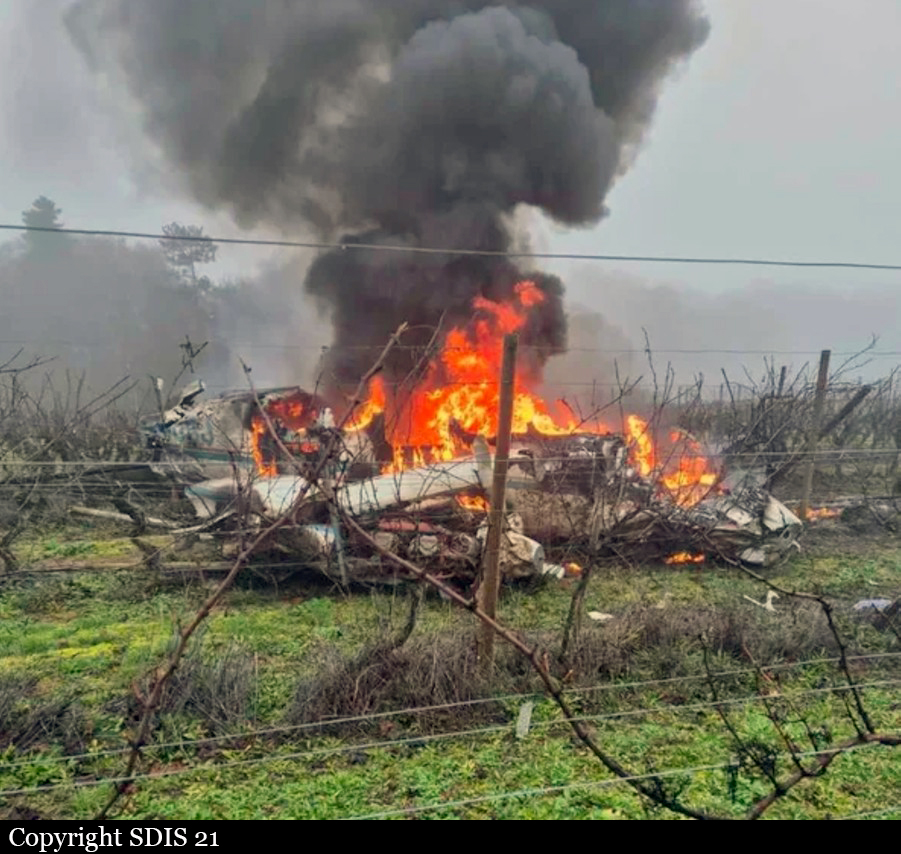
Crash of a Cessna 340A in Muskogee
Date & Time:
Nov 27, 2024 at 0008 LT
Registration:
N5757C
Survivors:
Yes
Schedule:
Livingston – Muskogee
MSN:
340A-0975
YOM:
1980
Crew on board:
1
Crew fatalities:
Pax on board:
4
Pax fatalities:
Other fatalities:
Total fatalities:
0
Circumstances:
While on a night approach to Muskogee-Davis Field, the pilot encountered engine problems. On final, the airplane lost height and collided with a Lockheed T-33 installed on metallic pylon near the airfield. Upon impact, a part of the right wing was torn off and the airplane crash landed in a field. All five occupants escaped with minor injuries.
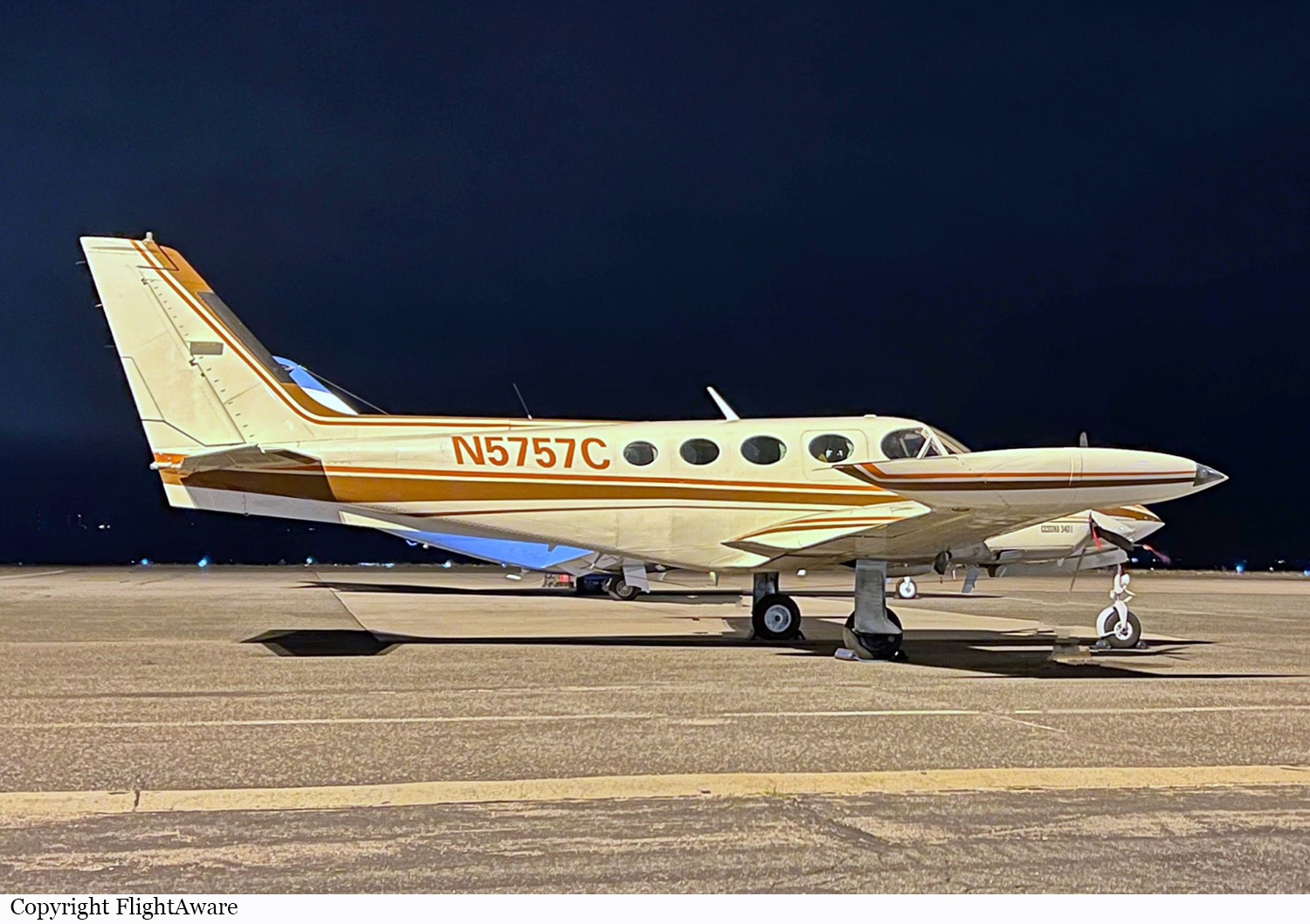
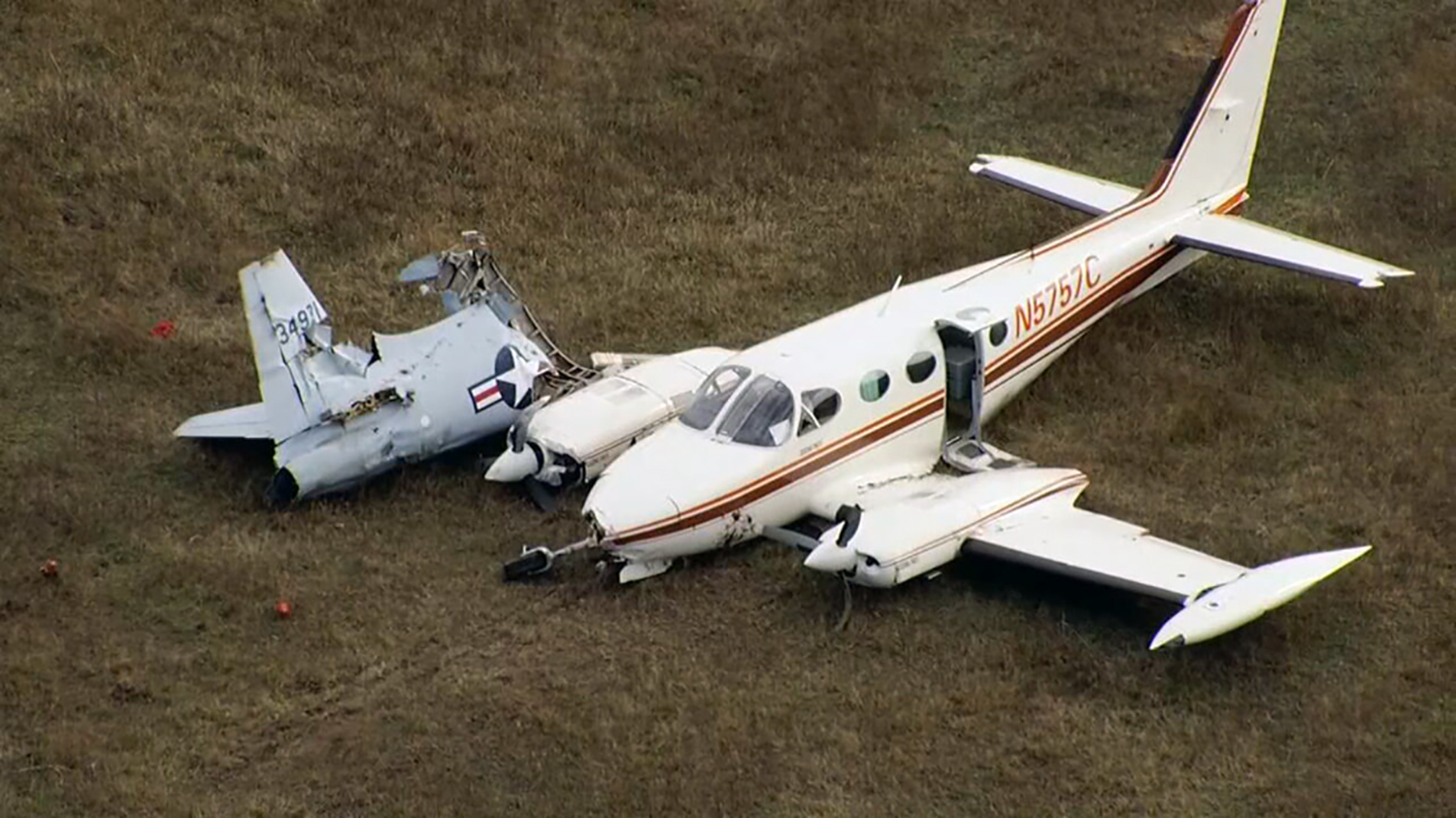
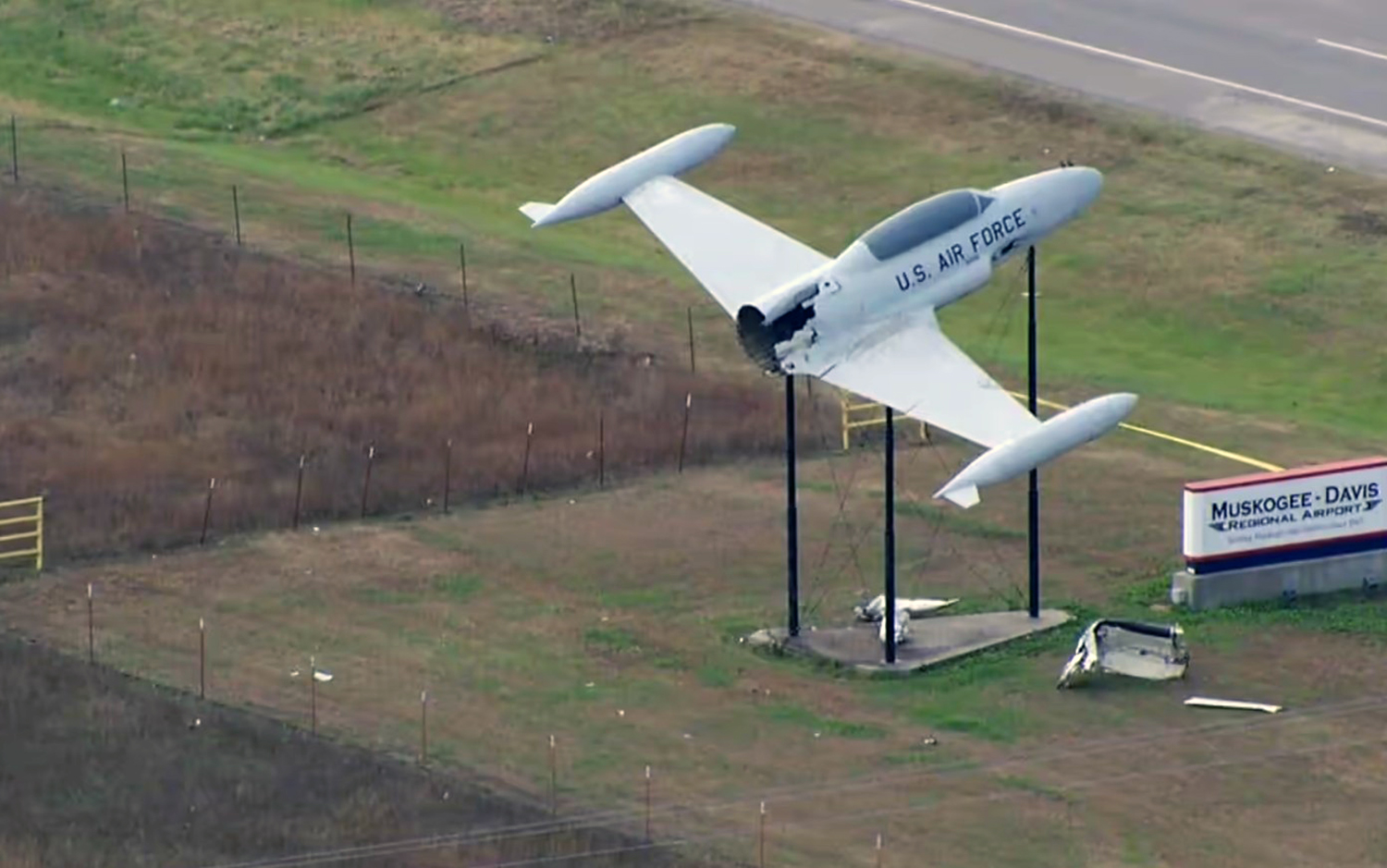
Crash of a Cessna 340A in Orléans
Date & Time:
Oct 27, 2024 at 1145 LT
Registration:
N38CM
Survivors:
Yes
Schedule:
Biarritz - Orléans
MSN:
340A-0901
YOM:
1979
Crew on board:
1
Crew fatalities:
Pax on board:
4
Pax fatalities:
Other fatalities:
Total fatalities:
0
Circumstances:
On final approach to Orléans-Loiret (Saint-Denis-de-l'Hôtel) Airport, the pilot reported problems with the left engine. Shortly later, the airplane lost height, impacted trees and crashed in a wooded area located about 2,8 km short of runway 05. All five occupants were injured.
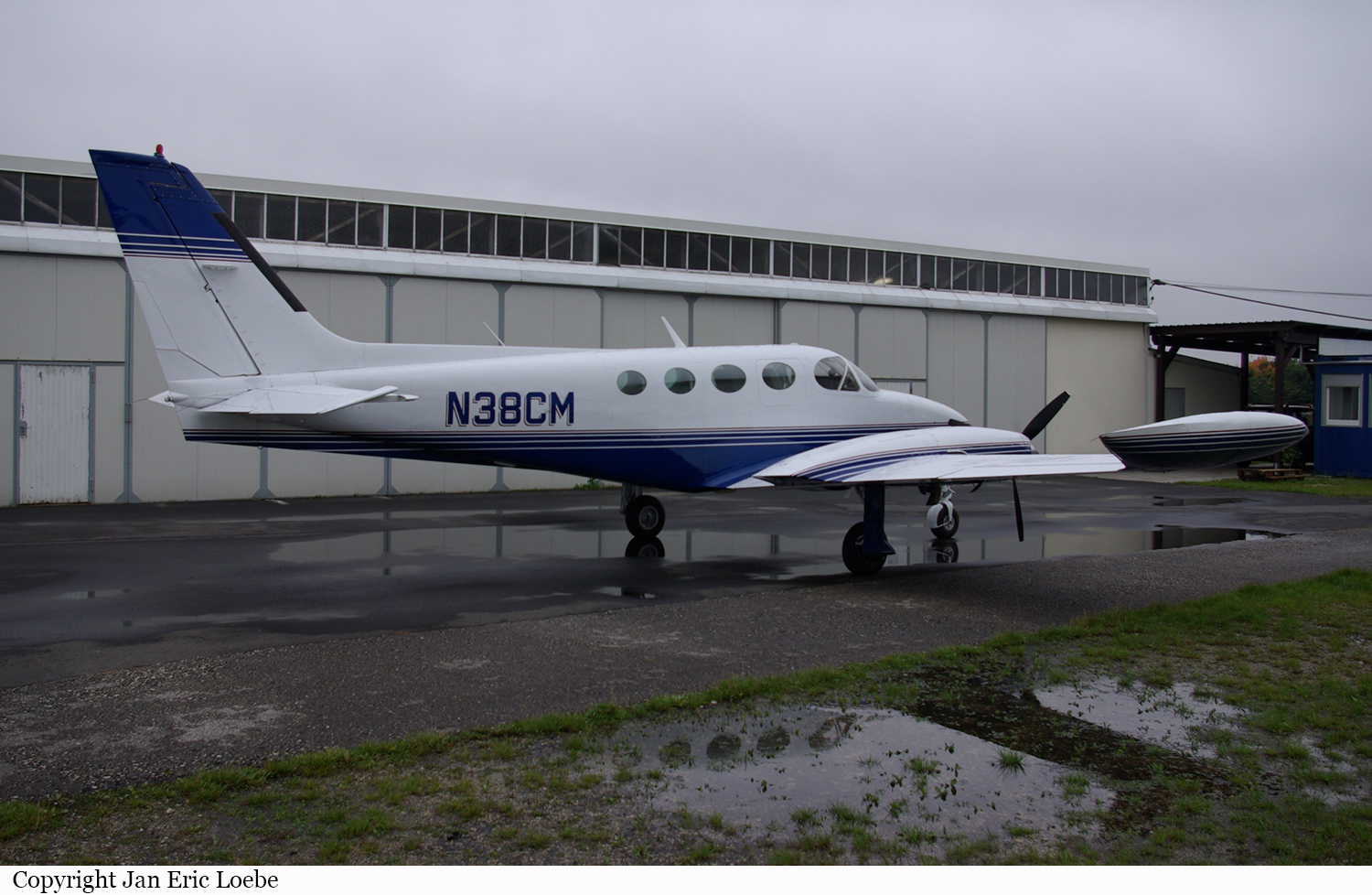
Crash of a Cessna 340A in Puerto Cabello: 2 killed
Date & Time:
Apr 26, 2024 at 1853 LT
Registration:
YV3112
Survivors:
Yes
Schedule:
Los Roques - Puerto Cabello
MSN:
340A-0794
YOM:
1979
Crew on board:
1
Crew fatalities:
Pax on board:
4
Pax fatalities:
Other fatalities:
Total fatalities:
2
Circumstances:
The pilot was approaching Puerto Cabello-Bartolomé Salom Airport when he encountered technical problems. The twin engine airplane crash landed in the lagoon of La Salina located less than 2 km north of the airport. Two passengers were killed and three other occupants were injured.

Crash of a Cessna 340 near Tapachula
Date & Time:
Aug 9, 2023
Survivors:
Yes
Crew on board:
0
Crew fatalities:
Pax on board:
0
Pax fatalities:
Other fatalities:
Total fatalities:
0
Circumstances:
The twin engine airplane (registration unknown) entered the Mexican airspace without authorization and attempted to land on an remote airstrip located about 40 km west of Tapachula. Following a belly landing on a grassy runway, the airplane veered to the left and collided with palm trees. No one was found on site but Police found a load of about 462 kg of cocaine.

Ground accident of a Cessna 340A in Bend
Date & Time:
Jun 8, 2023 at 1400 LT
Registration:
N340SW
Survivors:
Yes
Schedule:
Bend - Bend
MSN:
340A-0531
YOM:
1978
Crew on board:
1
Crew fatalities:
Pax on board:
1
Pax fatalities:
Other fatalities:
Total fatalities:
0
Captain / Total hours on type:
2200.00
Aircraft flight hours:
3230
Circumstances:
The pilot reported that while taxiing, after using a self-serve fuel station, the airplane’s left wing-tip fuel tank struck a post at the fuel station and a fire ignited. The pilot shut down the airplane’s engines and disembarked the airplane with his passenger. The left wing and fuselage were substantially damaged. The pilot reported that there were no preaccident mechanical malfunctions or failures that would have precluded normal operation.
Probable cause:
The pilot’s failure to maintain clearance from the fuel station, resulting in a ground collision and fire.
Final Report:
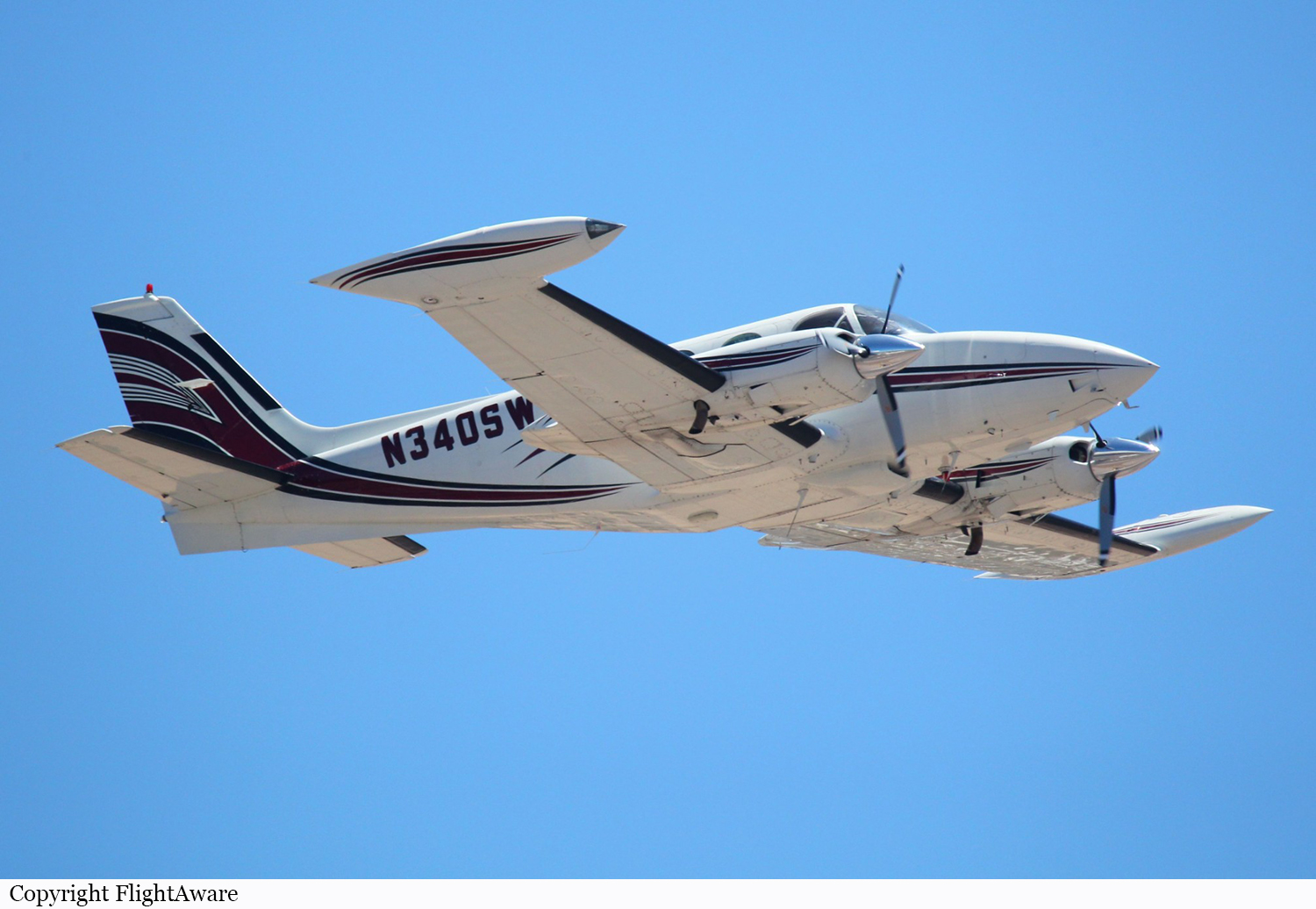
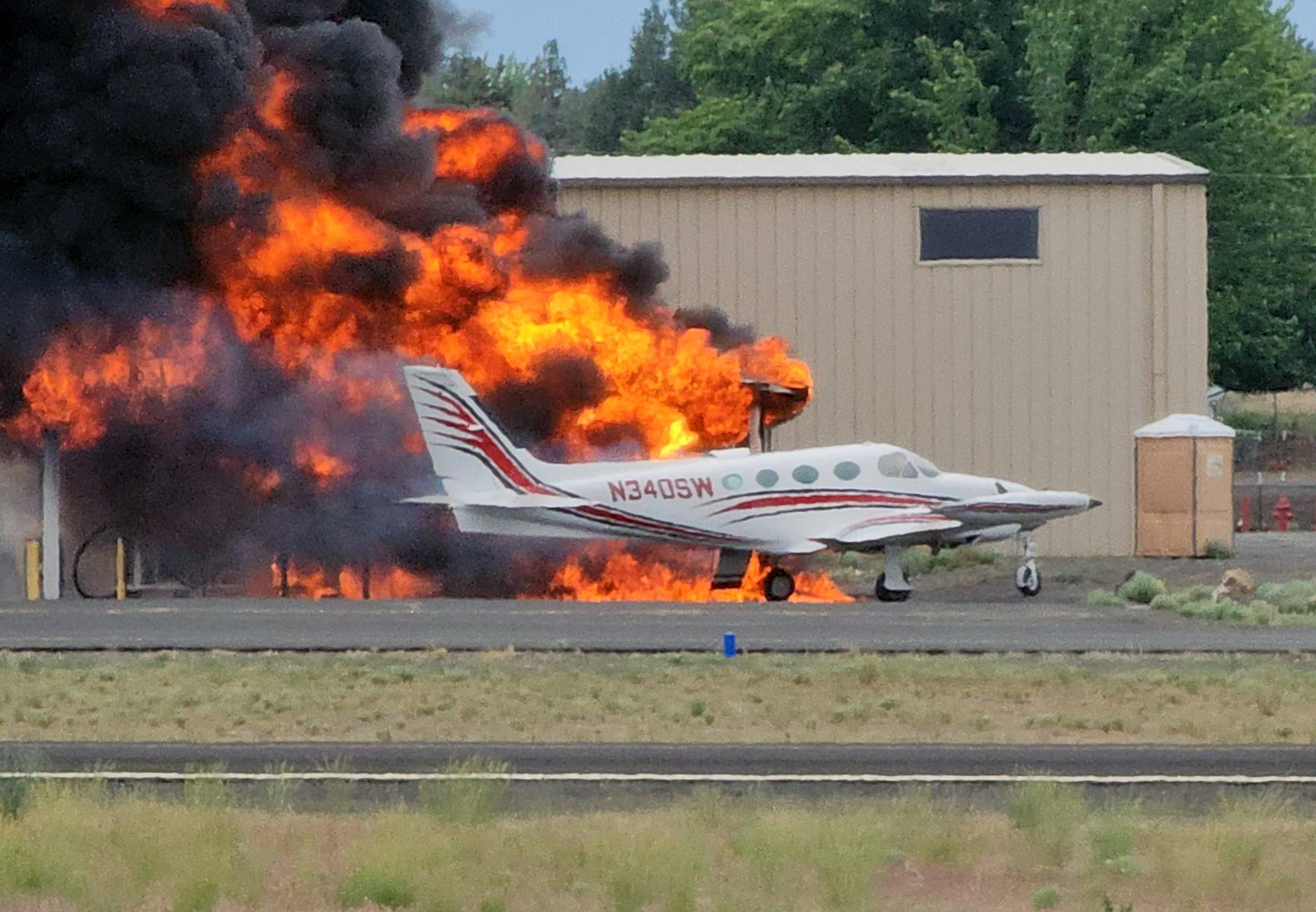

Crash of a Cessna 340A on Mt Mayon: 4 killed
Date & Time:
Feb 18, 2023 at 0650 LT
Registration:
RP-C2080
Survivors:
No
Schedule:
Legazpi - Manila
MSN:
340A-0917
YOM:
1979
Crew on board:
2
Crew fatalities:
Pax on board:
2
Pax fatalities:
Other fatalities:
Total fatalities:
4
Circumstances:
The flight was bound for Manila with one pilot, one aircraft mechanic, and two passengers on board. The aircraft was reported missing after it took off from Bicol International Airport (RPLK) at Daraga, Albay. The aircraft is being operated by the Energy Development Corporation (EDC) and was on a routine general aviation flight. All aircraft occupants were fatally injured in this accident. The pilot submitted a VFR to IRF flight plan that will utilize standard departure on RWY 05 of RPLK. According to the flight plan, it will be transitioning to IFR and intercepting NAGA VOR. It will further continue W9 airway and proceed to ALABAT for the arrival procedure in Manila. The flight departed from RWY 05, made a procedural right upwind turn, and crossed the final approach of RWY 05. At 0647LT, ATC established contact with the aircraft while passing 2,600 ft. The ATC inquired if the flight had already passed Camalig by-pass, and the pilot responded "We're passing Camalig by-pass now". The pilot was instructed by ATC to continue climbing and report twenty nautical miles out of RPLK, which was acknowledged by the pilot. At 0650LT, no position report was received from the aircraft. The ATC initiated contact with the aircraft several times, but no response was received. The duty ATC contacted the Manila Area Control Center (MACC) for any signatures of the aircraft that they might have picked up. The MACC informed the ATC that there was an initial signature contact that later disappeared on the radar monitor. At about 0900LT, the Philippine Aeronautical Rescue Coordinating Center (PARCC) elevated the alert to a DETRESFA on the missing aircraft. On the next day, February 19, 2023, the operator launched their own search operation using an AW139 helicopter, which was able to locate the missing aircraft at about 6,300 feet on the south-west slope of Mt Mayon Volcano with grid coordinates of 13°14'56.45 N and 123°40'57.79 E. An aerial reconnaissance by CAAP-AAIIB investigators and EDC using a helicopter was conducted on 20 February 2023. The general impact area shows the scattered wreckage of aircraft debris and signs of post-impact fire. All four occupants were killed.
Probable cause:
The pilot failed to follow the flight plan and made an unauthorized deviation. The pilot lack of situational awareness was considered as a contributing factor.
Final Report:
